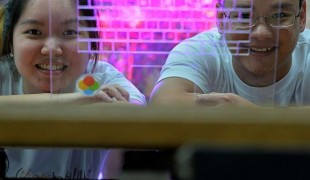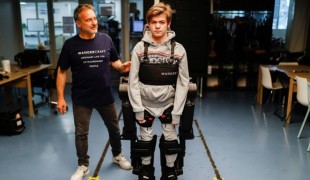- 4952
- 283
- 1
- 2
- 0
- Help Ukraine
About the solution
She shared a few tips on her blog on how to improve mouse control for people with disabilities:
"1. I reduce the sensitivity of the mouse to ‘very low’, this can be done in the control panel. Fuller instructions can be easily found online. I do need a bigger area for the mouse – a mouse pad is too small but a gaming pad will do the trick.
2. When doing graphics work, if I need to make a really small alteration like smooth a rough edge, I zoom in on the are that needs work so the pixels appear large on the screen. This makes it a little easier.
3. My steadiest part of my hand is the far right two fingers of my hand and the palm below it so I hold the mouse in a different way to most folk – clicking with my little finger.
4. I find a rounded mouse that my hand can wrap around much easier than a flat one".
Adapted from: http://www.disabilityhacker.com/page/4/
This solution shall not include mention to the use of drugs, chemicals or biologicals (including food); invasive devices; offensive, commercial or inherently dangerous content. This solution was not medically validated. Proceed with caution! If you have any doubts, please consult with a health professional.
DISCLAIMER: This story was written by someone who is not the author of the solution, therefore please be advised that, although it was written with the utmost respect for the innovation and the innovator, there can be some incorrect statements. If you find any errors please contact the patient Innovation team via info@patient-innovation.com
-
-
533
-
0
-
10866

Lowcost keyguard for disabled people
Video gaming
Writing (letters, songs, peoms)
Parkinson's Disease
Stroke
Muscular Dystrophy
Assistive Technology access
Strategy/Tip
Assistive Daily Life Device (to help ADL)
Chest pain or discomfort
Gait abnormalities (e.g., walking difficulties, unsteady gait)
Tremors
Muscle cramps or spasms
Difficulty coordinating movements
Stiffness or rigidity (difficulty moving)
Muscle weakness
Fatigue
Dizziness or lightheadedness
Numbness or weakness in the legs
Fainting or loss of consciousness
Irregular heartbeat (arrhythmia)
Cold hands or feet
Rapid heartbeat (tachycardia)
Transpiration (Sweating)
Shortness of breath
Chest tightness/pressure
Restoring mobility
Promoting self-management
Promoting inclusivity and social integration
General and Family Medicine
Neurology
Singapore
-
-
-
265
-
0
-
4020

Father creates exoskeleton to help son with genetic neurological condition walk
BODY BALANCE: Maintaining body balance
STANDING UP: Standing up from a seated position
WALKING WITH A WALKING AID: Walking with a walking aid
CAREGIVING
Cervical spinal cord injury/Tetraplegia
Assistive Technology access
Walking Aid (wheelchair/walker/crutches)
Restoring mobility
Managing pain
Promoting self-management
Preserving Organ Function
Managing Neurological Disorders
Recovering from Traumatic Injuries
Maintaining Balance and Mobility
Restoring Blood Circulation
To improve Treatment/Therapy
Preventing (Vaccination, Protection, Falls, Research/Mapping)
Raise awareness
Caregiving Support
General and Family Medicine
Intensive Care Medicine
Neurology
Physical Medicine and Rehabilitation
Sports Medicine
France
-
-
-
388
-
0
-
5919

Cell Phone Holder / Tablet / Iphone
Social interaction
COMMUNICATION: Communicating, whether by speaking, listening, or other means
Cerebral Palsy
Assistive Technology access
Strategy/Tip
Assistive Daily Life Device (to help ADL)
Gait abnormalities (e.g., walking difficulties, unsteady gait)
Difficulty coordinating movements
Stiffness or rigidity (difficulty moving)
Paralysis of the legs and lower body
Trouble with fine motor skills (e.g., writing, buttoning clothes)
Twitching or involuntary movements (myoclonus)
Acquired language impairment (Aphasia)
Promoting self-management
Managing Neurological Disorders
Promoting inclusivity and social integration
Raise awareness
Neurology
Portugal
-
 en
en